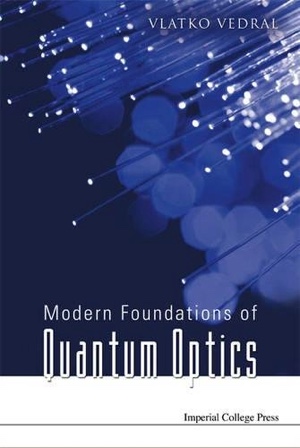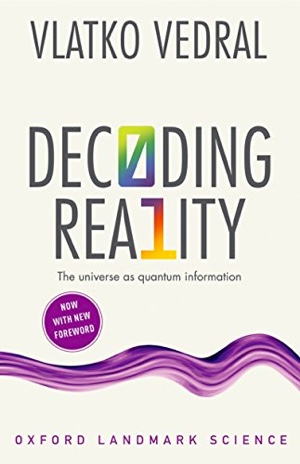(Scientific) Ghost Busters
A couple of days ago there was a YouTube feed for me recommending a clip in which Richard Dawkins was interviewed by Piers Morgan. Now, my readers will almost certainly know who Dawkins is, however, they may not be familiar with Morgan (best leave it at that 😊). In any case, at some point in the interview, Morgan asked Dawkins if Dawkins believed in the afterlife. The question itself was clearly superfluous, since it is exceedingly unlikely for the author of the best-selling “God Delusion” would answer positively. And, indeed, he didn’t.

Photo by Zsófia Fehér on Pexels.com https://www.pexels.com/photo/halloween-string-lights-5500688/
But then, and we can all see it coming, Morgan says “But what about all the evidence for afterlife? All the people who see a long dark tunnel with bright light at the end of it.” Dawkins doesn’t answer this one (he just grins and recommends the writings of Susan Blackmore of the “Meme Machine” fame), but you can simply think for yourself about this. What’s more likely? That our brains are hardwired the same way so that we all respond similarly to similar situations (such as the near-death experience), or that your deceased grandma, whose body has completely decomposed, still exists somewhere out there and is even trying to contact you from beyond the grave?
I know where my bets are (and I do miss my grandma), but I actually want to say more about it and this is the bit I find surprising and cool. And, of course, it’s all about physics (I am afraid I am as predictable as Piers Morgan).
When our brain gets faint stimuli, such as low frequency sounds that are just at the threshold of human hearing and may barely be perceived consciously, it tries to figure out the cause(s). Our brain is, among many other things, a machine uncovering causes for the relevant-to-us external events. Humans, more than any other animal, are instinctively primed to look for explanations for things we perceive. But the brain doesn’t sit passively waiting to come up with the best theory of causes possible. Instead, it engages in guesswork, because this is what saved our predecessors from dying. The brain might assume that the sound was created by another human being hiding in the bushes nearby, or a dangerous animal lurking among the trees, or whatever else is encoded in our psyche and considered to be important for survival. And, yes, most of the times our brain’s guesses might be wrong (they are skewed towards being overly cautious), but – when they are right – they are priceless as devices for keeping us alive. Better safe than sorry.
The frequencies we humans can hear are between about 20 and 20000 Hz. So, your washing machine spins at say 50 times a second, which is 50Hz, and that’s why you can hear that sound. The sound produced by the dog whistle, on the other hand, can be heard only by your dog (the frequency is typically twice as high as our upper threshold, which is just as well because the sound must be unbearably annoying).
The key question is, what kinds of wavelengths correspond to the low end of the human sound spectrum? Well, if the sound propagates through the air, its speed is about 340 meters per second. Divide this by 20Hz and you get 17meters. So somewhere between 10-meter-long corridors and 20-meter-long corridors (I am ignoring the factors of 2 and pi as always, plus the fact that some humans can hear better than others, so probably even 5-meter-long corridors will do) lies the range of frequencies generated by the motion of the air in these corridors that is on the verge of the human ability to hear them.
Now add to this the fact that corridors supporting these faint vibrations might be dark and relatively empty. We’ve got ourselves a perfect situation in which our brains would make wrong inferences about the possible causes of sounds. We hear faint noise, but we don’t see or feel anything else around us. Our brain kicks into action and conjures up an image of a human being and you interpret that as being your dead grandma at the end of the corridor.
Oh, I nearly forgot my punchline. Where might one find long, dark and empty corridors full of drafts of wind? You guessed it, it’s the medieval castles of Europe. Little wonder then that most ghost sightings happen in such places.
So, you are in the beautiful Castle Stuart on the shores of the stunningly atmospheric Moray Firth in the Scottish Highlands. Ask yourself this. Is it more likely that I’ve just seen a ghost of a dead person murdered by Mary Stuart, the Queen of Scots, more than 450 years ago; or that, because I am walking through the eery corridors of the Stuart castle, my brain is warning me about many potential dangers by inventing things that aren’t actually there?
So, the fact that many people report seeing ghosts (and I don’t doubt most of these account) is not evidence for ghosts, but, instead, for how our brains operate (ditto for all near death experiences and such). The fact that all human brains operate in similar fashion is simply due to the same evolutionary pressures we have all been subjected to for the last 2 million years or so.
I’m gonna stick my neck out here and tell you something else. Given that the lower frequency threshold for dogs is similar to humans, when you think you’ve seen a ghost, there is a high probability that your dog might think that too (albeit not the ghost of your grandma, but of an entity that matters to dogs – here your guess is as good as mine).
All this, by the way, is classical physics. Classical wave physics, to be more precise. But, what about quantum ghosts? Believe it or not, there are quantum ghosts and by that I don’t mean seeing your dead grandma at both ends of a long corridor at the same time (yeah, yeah, my kids would call this a `dad joke’). Quantum ghosts are not the classical ones only now in a superposition.
Quantum ghosts are things we have to postulate in quantum field theory in order to maintain both quantum mechanics and special relativity. Quantum field theory is the unification of the two, but it frequently feels like it’s bursting at its seams. The difficulty principally lies in the fact that special relativity is fundamentally a classical theory in which things exist only in one place and at one time. Quantum physics of course tells us otherwise and I have written about these issues many times in the past.
But, for the purposes of our present discussions, it suffices to think about quantum ghosts as extra degrees of freedom – say of the electromagnetic field – needed to make the field quantum mechanical, and, at the same time, continue to preserve relativity. These extra degrees of freedom are called ghosts because their excitations, their particles in other words, cannot be detected. So, they need to exist, but their presence cannot be directly detected. This is where things stand at present as far as our understanding is concerned.
Quantum ghosts are a topic worthy of a book, and saying more would needlessly take us beyond the point I want to make. It is this. Most of the time in science we believe it things existing out there not because we can directly see them or feel them or measure them (we cannot), but because our best available explanation demands so from us.
Hidden variable theories I’ve written about a couple of blogs ago, would like to deny the possibility that particles are in many places at the same time in quantum physics. In other words, the position being a q number (a matrix) instead of a c number (just a real number as in 5 meters), is something that “hidden variable people” would think of as a ghost. After all, we never directly see anything being in a superposition. We don’t see q numbers. However, we do know from various interference experiments, that superpositions, and therefore the q numbers, are simply the best accounts for the observed data.
Now, the price we pay for using hidden variables and for avoiding q numbers is simply that the resulting account is non-local. It violates relativity because things can propagate faster than the speed of light. Therefore, most of us choose to accept q numbers as being more sensible since then we kill two birds with one stone: q numbers account for superpositions while preserving relativity. The bottom line is that q numbers could be thought of as “ghosts”, but for which there is a great deal of (indirect) evidence. In my view, Q numbers are our best explanation of reality.
Claiming that deceased relatives are the best explanation for the ghosts people have seen, on the other hand, is not a good explanation. There is a great deal of evidence instead that it’s just the jiggery-pokery of our brains doing their best to prevent us from danger.
Physics is an experimental science. If your theory cannot account for the outcomes, it is surely out. But this simple statement hides a great deal of complexity. For how we judge whether a theory is the best account for the data gathered, and – also – how the data are gathered in the first place (I mean you need a theory to gather the data), are both complicated arts in their own right.
In other words, there are two kinds of scientific ghosts. Those that need to be busted and those without which we would not be able to explain our own reality. I hope that an executive movie producer is reading this, as it would surely make a great Christmas flick.
Sign up to my substack
BOOKS
ASK ME ANYTHING!
If you'd like to ask me a question or discuss my research then please get in touch.





